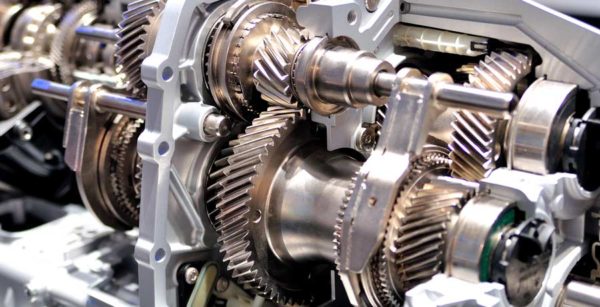Your car transmission moves the power from your engine to your wheels. It is one of the most crucial components of a vehicle. So it is important to understand how it functions.
Car transmissions come in automatic and manual. Manual transmissions require a stick-shift for the vehicle to operate properly. The transmission is typically mounted onto the chassis of a car in the front.
How does manual transmission work?
Manual transmissions have a clutch pedal and a shifter that the driver uses to manually change gears. These types of transmissions consist of a set of gears along a pair of shafts, called the input and output shafts.
The driver then needs to choose the proper gear and engage or disengage the clutch. The transmission uses a flywheel, pressure plate, and clutch to engage and disengage the transmission.
Types of manual transmissions
Dual Clutch– Uses two clutches. One clutch operates the even gears (2, 4, 6). The other clutch operates the odd gears (1, 3, 5).
Unsynchronized- Also called a crash gearbox, is a form of manual transmission based on gears that do not use synchronizing mechanisms.
Synchronized/Constant Mesh- This transmission uses idling or free spinning gears on a main shaft. They are in constant mesh with a corresponding set of gears, machined together as one single component and forming a second “lay shaft.”
Automated– A manual transmission with a computer controlling the shifting and clutch, most commonly used in heavy-duty trucks.
Single-Clutch– Also a manual transmission with the computer controlling the shifting and clutch. Shifting and clutch control can be hydraulic, electric, or electrohydraulic.
Preselector– A manual transmission with a vacuum or hydraulic shift control.
How does automatic transmission work?
Automatic transmissions don’t usually use clutches. The automatic transmission relies on a torque converter to change gears. The torque converter connects the engine to the transmission and uses pressurized fluid to transfer power to the gears.
Benefits of a high-performing transmission
- Your car will operate smoother and will require less power to function, saving you money in the long run.
- Increases your car’s value.
- Decreases the chances of your car breaking down.
- Improves your safety. Reduces the risk of breaking down on a long road trip.
- Enables you to accelerate faster.
Now that you know the importance of your car’s transmission and how it works, you should look into upgrading yours to get the most out of your vehicle. Give our experts at JDM Seattle a call today! (253) 447-7628.

